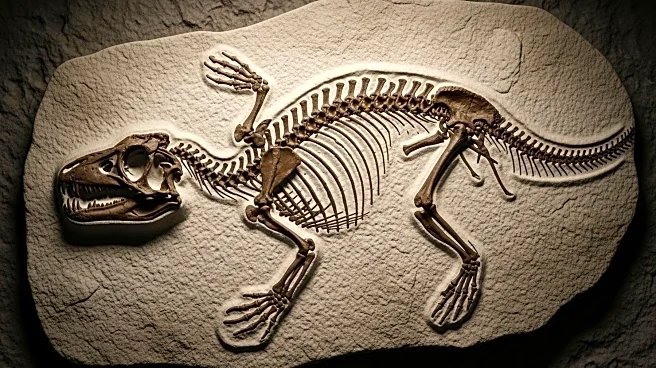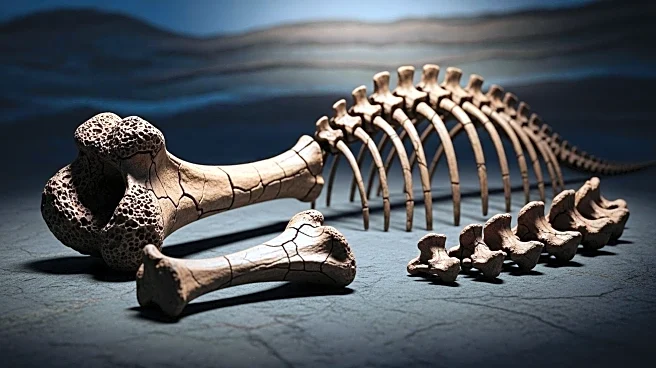What's Happening?
Paleontologists have uncovered a 265-million-year-old fossil of Pampaphoneus biccai, one of South America's largest predators before the dinosaurs. The discovery in southern Brazil provides insights into pre-dinosaur ecosystems and the events leading up to Earth's largest extinction. The fossil includes a nearly complete skull and several other skeletal remains, marking only the second known specimen of this species found in South America. Pampaphoneus biccai was a member of the therapsid group, known for its formidable size and bone-crushing capabilities. The skull of Pampaphoneus, measuring over 40 centimeters, indicates its impressive size and predatory nature.
Why It's Important?
The discovery of Pampaphoneus biccai is significant for understanding the terrestrial ecosystems before the Permian-Triassic extinction event, which wiped out nearly 86% of all animal species. This fossil provides a glimpse into the community structure of ecosystems just prior to this mass extinction. The find underscores Brazil's importance in paleontology, offering critical insights into ancient ecosystems. By studying species like Pampaphoneus, scientists can better reconstruct the world's ecosystems before they were drastically altered by the extinction event.
What's Next?
Researchers are excited by the prospects of further discoveries in the region, as each new fossil adds more pieces to the puzzle of life before the dinosaurs. The area where the fossil was found, rich in paleontological potential, has yielded other significant fossils in recent years. Continued exploration and study in this region may uncover more about the prehistoric world of South America and contribute to the global understanding of ancient ecosystems.













